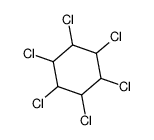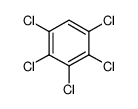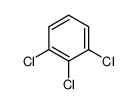1.Identification
1.1 GHS Product identifier
| Product name | hexachlorocyclohexane |
|---|
1.2 Other means of identification
| Product number | - |
|---|---|
| Other names | 1,2,3,4,5,6-hexachlorocyclo-hexane |
1.3 Recommended use of the chemical and restrictions on use
| Identified uses | For industry use only. Lindane is used as an insecticide on fruit and vegetable crops, for seed treatment, in forestry, and for livestock and pet treatment. Lindane is no longer produced in the United States (however, it is still formulated in this country), and aerial application of the chemical is prohibited. Lindane is also used topically for the treatment of head and body lice and scabies; it is available in 1 percent preparations as a lotion, cream, or shampoo. |
|---|---|
| Uses advised against | no data available |
1.4 Supplier's details
| Company | MOLBASE (Shanghai) Biotechnology Co., Ltd. |
|---|---|
| Address | Floor 4 & 5, Building 12, No. 1001 North Qinzhou Road, Xuhui District, Shanghai, China |
| Telephone | +86(21)64956998 |
| Fax | +86(21)54365166 |
1.5 Emergency phone number
| Emergency phone number | +86-400-6021-666 |
|---|---|
| Service hours | Monday to Friday, 9am-5pm (Standard time zone: UTC/GMT +8 hours). |
2.Hazard identification
2.1 Classification of the substance or mixture
no data available
2.2 GHS label elements, including precautionary statements
| Pictogram(s) | no data available |
|---|---|
| Signal word | no data available |
| Hazard statement(s) | no data available |
| Precautionary statement(s) | |
| Prevention | no data available |
| Response | no data available |
| Storage | no data available |
| Disposal | no data available |
2.3 Other hazards which do not result in classification
no data available
3.Composition/information on ingredients
3.1 Substances
| Chemical name | Common names and synonyms | CAS number | EC number | Concentration |
|---|---|---|---|---|
| hexachlorocyclohexane | hexachlorocyclohexane | 608-73-1 | none | 100% |
4.First-aid measures
4.1 Description of necessary first-aid measures
General advice
Consult a physician. Show this safety data sheet to the doctor in attendance.
If inhaled
Fresh air, rest. Refer for medical attention.
In case of skin contact
Wear protective gloves when administering first aid. Remove contaminated clothes. Rinse and then wash skin with water and soap. Refer for medical attention .
In case of eye contact
First rinse with plenty of water for several minutes (remove contact lenses if easily possible), then refer for medical attention.
If swallowed
Rinse mouth. Give a slurry of activated charcoal in water to drink, but NOT if convulsions occur. Refer immediately for medical attention. Rest.
4.2 Most important symptoms/effects, acute and delayed
ACUTE/CHRONIC HAZARDS: Carcinogen. Toxic. Irritant. Hazardous decomposition product.
ACUTE/CHRONIC HAZARDS: Highly toxic carcinogen. May cause irritation on contact. Hazardous decomposition products.
ACUTE/CHRONIC HAZARDS: Highly toxic. May cause irritation on contact. Hazardous decomposition products.
Excerpt from ERG Guide 151 [Substances - Toxic (Non-combustible)]: Highly toxic, may be fatal if inhaled, swallowed or absorbed through skin. Avoid any skin contact. Effects of contact or inhalation may be delayed. Fire may produce irritating, corrosive and/or toxic gases. Runoff from fire control or dilution water may be corrosive and/or toxic and cause pollution. (ERG, 2016)
Lindane is a stimulant of the nervous system, causing violent convulsions that are rapid in onset and generally followed by death or recovery within 24 hours. The probable human oral lethal dose is 50-500 mg/kg, or between 1 teaspoon and 1 ounce for a 150-lb (70 kg) person. (EPA, 1998)
4.3 Indication of immediate medical attention and special treatment needed, if necessary
Basic treatment: Establish a patent airway. Suction if necessary. Watch for signs of respiratory insufficiency and assist ventilations if necessary. Administer oxygen by nonrebreather mask at 10 to 15 L/min. Monitor for pulmonary edema and treat if necessary ... . Anticipate seizures and treat if necessary ... . For eye contamination, flush eyes immediately with water. Irrigate each eye continuously with normal saline during transport ... . Do not use emetics. For ingestion, rinse mouth and administer 5 mL/kg up to 200 mL of water for dilution if the patient can swallow, has a strong gag reflex, and does not drool. Administer activated charcoal ... . /Lindane and Related Compounds/
5.Fire-fighting measures
5.1 Extinguishing media
Suitable extinguishing media
To extinguish a fire involving this chemical you may use a dry chemical, carbon dioxide, foam or halon extinguisher; a water spray may also be used.
5.2 Specific hazards arising from the chemical
Excerpt from ERG Guide 154 [Substances - Toxic and/or Corrosive (Non-Combustible)]: Non-combustible, substance itself does not burn but may decompose upon heating to produce corrosive and/or toxic fumes. Some are oxidizers and may ignite combustibles (wood, paper, oil, clothing, etc.). Contact with metals may evolve flammable hydrogen gas. Containers may explode when heated. For electric vehicles or equipment, ERG Guide 147 (lithium ion batteries) or ERG Guide 138 (sodium batteries) should also be consulted. (ERG, 2016)
Excerpt from ERG Guide 151 [Substances - Toxic (Non-combustible)]: Non-combustible, substance itself does not burn but may decompose upon heating to produce corrosive and/or toxic fumes. Containers may explode when heated. Runoff may pollute waterways. (ERG, 2016)
Excerpt from ERG Guide 151 [Substances - Toxic (Non-combustible)]: Non-combustible, substance itself does not burn but may decompose upon heating to produce corrosive and/or toxic fumes. Containers may explode when heated. Runoff may pollute waterways. (ERG, 2016)
Excerpt from ERG Guide 151 [Substances - Toxic (Non-combustible)]: Non-combustible, substance itself does not burn but may decompose upon heating to produce corrosive and/or toxic fumes. Containers may explode when heated. Runoff may pollute waterways. (ERG, 2016)
When heated to decomposition, this compound emits toxic fumes of chlorine, hydrochloric acid, and phosgene. (EPA, 1998)
5.3 Special protective actions for fire-fighters
Wear self-contained breathing apparatus for firefighting if necessary.
6.Accidental release measures
6.1 Personal precautions, protective equipment and emergency procedures
Use personal protective equipment. Avoid dust formation. Avoid breathing vapours, mist or gas. Ensure adequate ventilation. Evacuate personnel to safe areas. Avoid breathing dust. For personal protection see section 8.
6.2 Environmental precautions
Personal protection: filter respirator for organic gases and particulates adapted to the airborne concentration of the substance, chemical protection suit including self-contained breathing apparatus and protective gloves. Do NOT let this chemical enter the environment. Sweep spilled substance into sealable non-metallic containers. If appropriate, moisten first to prevent dusting. Carefully collect remainder. Then store and dispose of according to local regulations.
6.3 Methods and materials for containment and cleaning up
Liquids containing lindane should be absorbed in vermiculite, dry sand, earth, or a similar material.
7.Handling and storage
7.1 Precautions for safe handling
Avoid contact with skin and eyes. Avoid formation of dust and aerosols. Avoid exposure - obtain special instructions before use.Provide appropriate exhaust ventilation at places where dust is formed. For precautions see section 2.2.
7.2 Conditions for safe storage, including any incompatibilities
Well closed. Store in an area without drain or sewer access. Provision to contain effluent from fire extinguishing. Separated from bases and food and feedstuffs.Store in dry place. ... avoid exposure ... to extreme heat, strong alkalis, and powdered metals.
8.Exposure controls/personal protection
8.1 Control parameters
Occupational Exposure limit values
10 Hr Time-Weighted Avg: 0.5 mg/cu m. (skin).
Biological limit values
no data available
8.2 Appropriate engineering controls
Handle in accordance with good industrial hygiene and safety practice. Wash hands before breaks and at the end of workday.
8.3 Individual protection measures, such as personal protective equipment (PPE)
Eye/face protection
Safety glasses with side-shields conforming to EN166. Use equipment for eye protection tested and approved under appropriate government standards such as NIOSH (US) or EN 166(EU).
Skin protection
Wear impervious clothing. The type of protective equipment must be selected according to the concentration and amount of the dangerous substance at the specific workplace. Handle with gloves. Gloves must be inspected prior to use. Use proper glove removal technique(without touching glove's outer surface) to avoid skin contact with this product. Dispose of contaminated gloves after use in accordance with applicable laws and good laboratory practices. Wash and dry hands. The selected protective gloves have to satisfy the specifications of EU Directive 89/686/EEC and the standard EN 374 derived from it.
Respiratory protection
Wear dust mask when handling large quantities.
Thermal hazards
no data available
9.Physical and chemical properties
| Physical state | PHYSICAL DESCRIPTION: White crystalline powder. |
|---|---|
| Colour | White to yellow, crystalline powder |
| Odour | Slight musty odor |
| Melting point/ freezing point | 141.5ºC |
| Boiling point or initial boiling point and boiling range | 288ºC at 760 mmHg |
| Flammability | Noncombustible Solid, but may be dissolved in flammable liquids.Not combustible. Liquid formulations containing organic solvents may be flammable. Gives off irritating or toxic fumes (or gases) in a fire. |
| Lower and upper explosion limit / flammability limit | no data available |
| Flash point | 157.5ºC |
| Auto-ignition temperature | Not flammable (USCG, 1999) |
| Decomposition temperature | no data available |
| pH | no data available |
| Kinematic viscosity | no data available |
| Solubility | Insoluble (1 mg/100 ml) |
| Partition coefficient n-octanol/water (log value) | no data available |
| Vapour pressure | 0.0317 mm Hg at 20°C |
| Density and/or relative density | 1.59g/cm3 |
| Relative vapour density | (air = 1): 10 |
| Particle characteristics | no data available |
10.Stability and reactivity
10.1 Reactivity
no data available
10.2 Chemical stability
Stable to heat, light, oxidation.
10.3 Possibility of hazardous reactions
Not flammable.Halogenated aliphatic compounds, such as ALPHA-BHC, are moderately or very reactive. Halogenated organics generally become less reactive as more of their hydrogen atoms are replaced with halogen atoms. Materials in this group may be incompatible with strong oxidizing and reducing agents. Also, they may be incompatible with many amines, nitrides, azo/diazo compounds, alkali metals, and epoxides.
10.4 Conditions to avoid
no data available
10.5 Incompatible materials
Incompatible with alkaline materials.
10.6 Hazardous decomposition products
Decomposition product includes ... carbon monoxide.
11.Toxicological information
Acute toxicity
- Oral: LD50 Rat oral 76 mg/kg
- Inhalation: LC50 Rat inhalation 1.56 mg/L
- Dermal: no data available
Skin corrosion/irritation
no data available
Serious eye damage/irritation
no data available
Respiratory or skin sensitization
no data available
Germ cell mutagenicity
no data available
Carcinogenicity
Cancer Classification: Suggestive Evidence of Carcinogenicity, but Not Sufficient to Assess Human Carcinogenic Potential
Reproductive toxicity
Limited information is available regarding the reproductive or developmental effects of lindane in humans. The one available study reported increased levels (not statistically significant) of follicle stimulating hormone and decreased levels of testosterone in men occupationally exposed to lindane. It is not known whether these hormonal changes could result in diminished reproductive capability. Animal studies have reported reproductive effects, such as decreased sperm count, increased testicular weight, and disruption of spermatogenesis from oral exposure to lindane. Disrupted ovarian cycling and reduced ovulation rate were reported in female animals exposed to lindane by gavage (experimentally placing the chemical in the stomach). Lindane has not been reported to cause developmental effects, such as birth defects, in animals via oral exposure.
STOT-single exposure
no data available
STOT-repeated exposure
no data available
Aspiration hazard
no data available
12.Ecological information
12.1 Toxicity
- Toxicity to fish: LC50 /Ameiurus melas/ (Black bullhead, weight 1.2 g) 64 ug/L/96 hr (95% confidence limit: 49-81 ug/L) at 18°C /Technical material, 99%
- Toxicity to daphnia and other aquatic invertebrates: LC50 Daphnia magna (Water flea) 1.64 mg/L/24 hr (95% confidence limit: 1.15-1.78 mg/L); static
- Toxicity to algae: no data available
- Toxicity to microorganisms: no data available
12.2 Persistence and degradability
Pure cultures of Clostridium sphenoicles metabolizes lindane to gamma-3,4,5,6-tetrachloro-1-cyclohexene. Pure cultures of Escherichia coli metabolizes lindane to gamma-2,3,4,5,6-pentachloro-1-cyclohexene.
12.3 Bioaccumulative potential
Penaeus duorarum (decapod) exposed to 0.13-0.62 ug/L of lindane for 96 hrs exhibited a bioaccumulation factor of 32-143. Lagodon rhombides (fish) exposed to 18 to 91 ug/L of lindane for 96 hrs exhibited a bioaccumulation factor range of 167 to 554. Cyprinodon variegatus (fish) exposed to 42 to 109 ug/L of lindane for 96 hr exibited bioaccumulation factors ranging from 337 to 727.
12.4 Mobility in soil
... Sorption to suspended sediment and biota is not extensive, sorption is an important process for ... transporting lindane to anaerobic sediments where transformation occurs.
12.5 Other adverse effects
no data available
13.Disposal considerations
13.1 Disposal methods
Product
The material can be disposed of by removal to a licensed chemical destruction plant or by controlled incineration with flue gas scrubbing. Do not contaminate water, foodstuffs, feed or seed by storage or disposal. Do not discharge to sewer systems.
Contaminated packaging
Containers can be triply rinsed (or equivalent) and offered for recycling or reconditioning. Alternatively, the packaging can be punctured to make it unusable for other purposes and then be disposed of in a sanitary landfill. Controlled incineration with flue gas scrubbing is possible for combustible packaging materials.
14.Transport information
14.1 UN Number
| ADR/RID: UN2761 | IMDG: UN2761 | IATA: UN2761 |
14.2 UN Proper Shipping Name
| ADR/RID: ORGANOCHLORINE PESTICIDE, SOLID, TOXIC |
| IMDG: ORGANOCHLORINE PESTICIDE, SOLID, TOXIC |
| IATA: ORGANOCHLORINE PESTICIDE, SOLID, TOXIC |
14.3 Transport hazard class(es)
| ADR/RID: unknown | IMDG: unknown | IATA: unknown |
14.4 Packing group, if applicable
| ADR/RID: III | IMDG: III | IATA: III |
14.5 Environmental hazards
| ADR/RID: no | IMDG: no | IATA: no |
14.6 Special precautions for user
no data available
14.7 Transport in bulk according to Annex II of MARPOL 73/78 and the IBC Code
no data available
15.Regulatory information
15.1 Safety, health and environmental regulations specific for the product in question
| Chemical name | Common names and synonyms | CAS number | EC number |
|---|---|---|---|
| hexachlorocyclohexane | hexachlorocyclohexane | 608-73-1 | none |
| European Inventory of Existing Commercial Chemical Substances (EINECS) | Listed. | ||
| EC Inventory | Listed. | ||
| United States Toxic Substances Control Act (TSCA) Inventory | Not Listed. | ||
| China Catalog of Hazardous chemicals 2015 | Listed. | ||
| New Zealand Inventory of Chemicals (NZIoC) | Listed. | ||
| Philippines Inventory of Chemicals and Chemical Substances (PICCS) | Not Listed. | ||
| Vietnam National Chemical Inventory | Not Listed. | ||
| Chinese Chemical Inventory of Existing Chemical Substances (China IECSC) | Not Listed. | ||
16.Other information
Information on revision
| Creation Date | Aug 17, 2017 |
|---|---|
| Revision Date | Aug 17, 2017 |
Abbreviations and acronyms
- CAS: Chemical Abstracts Service
- ADR: European Agreement concerning the International Carriage of Dangerous Goods by Road
- RID: Regulation concerning the International Carriage of Dangerous Goods by Rail
- IMDG: International Maritime Dangerous Goods
- IATA: International Air Transportation Association
- TWA: Time Weighted Average
- STEL: Short term exposure limit
- LC50: Lethal Concentration 50%
- LD50: Lethal Dose 50%
- EC50: Effective Concentration 50%
References
- IPCS - The International Chemical Safety Cards (ICSC), website: http://www.ilo.org/dyn/icsc/showcard.home
- HSDB - Hazardous Substances Data Bank, website: https://toxnet.nlm.nih.gov/newtoxnet/hsdb.htm
- IARC - International Agency for Research on Cancer, website: http://www.iarc.fr/
- eChemPortal - The Global Portal to Information on Chemical Substances by OECD, website: http://www.echemportal.org/echemportal/index?pageID=0&request_locale=en
- CAMEO Chemicals, website: http://cameochemicals.noaa.gov/search/simple
- ChemIDplus, website: http://chem.sis.nlm.nih.gov/chemidplus/chemidlite.jsp
- ERG - Emergency Response Guidebook by U.S. Department of Transportation, website: http://www.phmsa.dot.gov/hazmat/library/erg
- Germany GESTIS-database on hazard substance, website: http://www.dguv.de/ifa/gestis/gestis-stoffdatenbank/index-2.jsp
- ECHA - European Chemicals Agency, website: https://echa.europa.eu/





















-
-

-
-
-

-
-
-

-
-
-

-
-
-

-
More Suppliers>>Henan Coreychem Co.,Ltd
CHINA
Purity: 98%
Lead Time: 3 Day(s)
Price: Min $1 /g
Chengdu SinoStandards Bio-Tech Co.,Ltd.
CHINA
Purity: 98%
Lead Time: 7 Day(s)
Price: -
Zhangjiagang Guotai-Huarong New Chemical Materials Co., Ltd
CHINA
Purity: 95%
Lead Time: 14 Day(s)
Price: -
Beijing Huaerbo Technology Co., Ltd.
CHINA
Purity: 96%
Lead Time: 7 Day(s)
Price: -
Nanjing Pai Town Medical Technology Co., Ltd.
CHINA
Purity: 96%
Lead Time: 7 Day(s)
Price: -